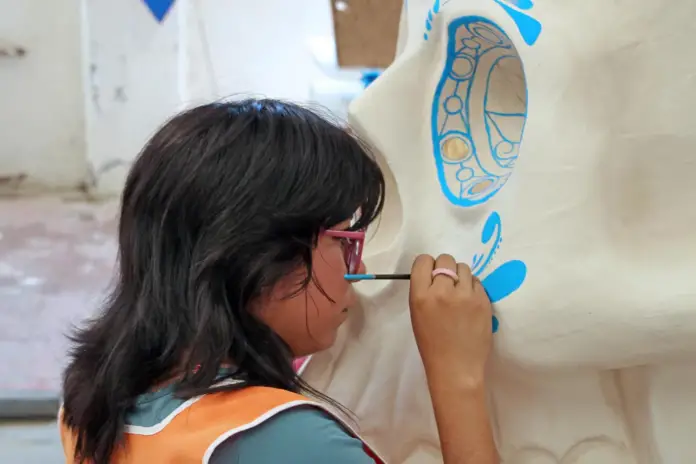
Around 70 artisans from Atlixco, Puebla, are now making dozens of giant skulls to be installed this Friday in the ‘Valley of Catrinas’ to commemorate the Day of the Dead on November 1 and 2.
For this edition, whose theme will be ‘Mexican Historical Figures’, they will place 11 in the streets of the municipality, in addition to two in surrounding communities and two more in the airports of Mexico City.
In addition, they will send six monumental skulls outside the country to be installed in Rome, Italy; New York and Los Angeles.
These catrinas, skull figures created by the illustrator José Guadalupe Posada and named by the muralist Diego Rivera, will measure about 8 meters high and 4 or 5 meters wide.
Their creators have been working on them for about six months, planning them from their conceptualization on paper to then begin creating the metal bases, which takes about two months, and then using the cartonería technique to shape them.
Using paper, cardboard and glue, they mold the giant skeletons with their hands.
Once they dry, another group of artisans paints them and recreates icons of the Revolution and Independence of Mexico, such as the revolutionary Adelita, the child hero Juan Escutia, Emiliano Zapata, Pancho Villa, José María Morelos, and even a xoloitzcuintle dog, a breed native to Mexico that is associated with death.
What is the last day to see the monumental skulls in Atlixco?
Valerie Bartsch Aburto, councilor for Tourism, Art and Native Peoples of Atlixco, explained to EFE that the ‘Valley of the Catrinas’ will be there from October 11 to November 10.
“(It is) a totally new design compared to what has been seen in past editions, I assure you that you have to come and visit them, this year the theme is Mexican historical figures and, as you can see, some are already identifiable,” he said.
Craftsman Hilario Jiménez shared that he is part of the blacksmith team, the most creative and fundamental part of the entire process, because they make the metal skeleton for each one and they must be precise.
“For example, on the metal base of the China Poblana (a character that represents a woman from the center of the country) it took me a week and a half, since we used tubes, round tubes, square tubes, angles and welding,” he said.
Source: elfinanciero






